Evolutionary Ecology
The department of Evolutionary Ecology gathers complementary skills in behavioural ecology, population dynamics, population biology, community ecology, and methodology (statistics and modelling). The research done in the department aims at studying how animal species evolve in a changing world by understanding the causes of the evolution of traits, adaptations and interactions. For that, we consider different levels of organization from individuals to populations and communities. Because organisms cannot be considered isolated from other biotic factors, we consider pathogens but also competing species within communities.
We study how individuals adapt to their environments that are largely impacted by anthropic pressures, and how life history traits and behaviour evolve in response to these pressures. Although we mainly focus on phenotype, we more and more consider the mechanistic link between the genotype and the phenotype. We develop the theoretical framework of our discipline through a conceptual and modeling approach. In parallel, we test hypotheses that arise from theoretical predictions through experimental, comparative and observational approaches on different biological models (insects, birds, mammals). Experimental approaches are developed in the laboratory (insect model) and in natura (bird, insect and mammal models). Observational and comparative research is mainly concerned with vertebrates. Our approaches are also, and increasingly, interested in the mechanisms of adaptive responses. In addition to the classical approaches of demographic analysis and trait change, methods of ecophysiology, chemical ecology and molecular biology are used.
Our department hosts several long-term studies of wild populations of different species. These long-term studies offer a valuable way to understand how biotic and abiotic factors affect individuals’ life history traits, and the functioning of populations in natura. Five populations of mammalian species are thus monitored for several years (more than 40 years on roe deer, 30 on Alpine marmots, 25 years on cats, 16 years on zebras, and 20 years on impala). Two of our study sites (La Sassière in Vanoise National Park (Alpine marmots) and Hwange National Park) have been certified as “Site d’Etude en Ecologie Globale” (SEEG), and two (ZA “Hwange” and ZA “Antarctic and sub-Antarctic”) were certified as “Zone Atelier” by the CNRS.
The department of Evolutionary ecology is also largely involved in training activities. Lastly, we also have strong socio-economic relationships. Indeed, because we address questions of major societal interest (global warming, public health) we tightly collaborate with socio-economic partners (Office Français de la Biodiversité, Vanoise National Park, Hwange National Park in Zimbabwe, Office National des Forêts, etc.) and participate to general public and media events.
Publications
Display of 1651 to 1680 publications on 2459 in total
Machupo Guanarito Sabia and Chapare Viruses
incollection . 68 : 747-757
Journal article
see the publicationDéterminisme de l’impact des pesticides en cours d’eau : influence de la dynamique de l’exposition sur les effets biologiques
Colloque de restitution du programme EC2CO . : 1
Poster
see the publicationPopulation level integration of individual effect measurements for in situ water quality assessment: a modelling approach with Gammarus fossarum
14th international colloquium on Amphipoda . : 1
Poster
see the publicationCoupler modèles de dynamique de population et encagements in situ pour appréhender les effets populationnels des contaminations : illustration de la démarche chez le crustacé Gammarus fossarum
Ecologie 2010 . : 25
Conference paper
see the publicationA temperature-dependent Leslie model to describe the dynamics of a bullhead (Cottus gobio) population
Conference on Computational and Mathematical Population Dynamics . : 1
Conference paper
see the publicationModelling and in situ caging for a realistic extrapolation of ecotoxicological effects at the population level: a methodological approach with Gammarus fossarum (Crustacean) and Potamopyrgus antipodarum (Gastropod)
20th SETAC annual meeting . : 24
Conference paper
see the publicationPopulation dynamics and integration of individual toxicological effects for in situ water quality assessment: a modelling approach with Gammarus fossarum and Potamopyrgus antipodarum
Colloque de la SEFA . : 1
Poster
see the publicationApplication of a temperature-dependent von Bertalanffy growth model to bullhead (Cottus gobio)
Ecological Modelling . 221 ( 20 ) : 2475-2481
Journal article
see the publicationSerological evidence for the presence of non-pathogenic rabbit haemorrhagic disease virus-like strains in rabbits Oryctolagus cuniculus of the Kerguelen archipelago
Polar Biology . 33 ( 7 ) : 985-989
Journal article
see the publicationModelling the effect of temperature on transmission of dengue
Medical and Veterinary Entomology . 24 ( 1 ) : 66-73
Journal article
see the publicationPathocenosis: A Holistic Approach to Disease Ecology
EcoHealth . 7 ( 2 ) : 237-241
Journal article
see the publicationMapping brucellosis risk in communities in the Republic of Armenia
Geospatial Health . 5 ( 1 ) : 103 - 118
Journal article
see the publicationAnalysis of Amblyomma surveillance data in the Caribbean: Lessons for future control programmes
Veterinary Parasitology . 167 ( 2-4 ) : 327-335
Journal article
see the publicationBiogeographical patterns of soil microbial communities at the scale of French metropolitan territory
13. International Symposium on Microbial Ecology ISME 13 . : 1 p.
Conference paper
see the publicationBiogeography of soil microbial communities: a review and a description of the ongoing french national initiative
Agronomy for Sustainable Development . 30 ( 2 ) : 359-365
DOI: 10.1051/agro/2009033
Journal article
see the publicationFrom individual to population level effects of toxicants in the tubicifid branchiura sowerbyi using threshold effect models in a bayesian framework
Environmental Science and Technology . 44 ( 9 ) : 3566-3571
DOI: 10.1021/es903860w
Journal article
see the publicationMake Love Not War: When Should Less Competitive Males Choose Low-Quality but Defendable Females?
The American Naturalist . 175(6) : 650-661
Journal article
see the publicationAnalyse de la distribution des titres observés pour déterminer un seuil de positivité d’un test ELISA
Réunion annuelle du groupe « Tiques et Maladies Transmises » du « Réseau Ecologie Interactions Durable » (REID) . : 10 slides
Conference paper
see the publicationThe dynamics of energy allocation in adult arrhenotokous and thelytokous Venturia canescens
Entomologia Experimentalis et Applicata . 135(1) : 68-76
Journal article
see the publicationDoes Kin Recognition and Sib-Mating Avoidance Limit the Risk of Genetic Incompatibility in a Parasitic Wasp?
PLoS ONE . 5(10) : 167-174
Journal article
see the publicationNo difference between the sexes in fine-scale spatial genetic structure of roe deer
PLoS ONE . 5 ( 12 ) : e14436
Journal article
see the publicationAssessing whether mortality is additive using marked animals: a Bayesian state–space modeling approach
Ecology . 91 ( 7 ) : 1916-1923
DOI: 10.1890/09-1931.1
Journal article
see the publicationCan cat predation help competitors coexist in seabird communities?
Journal of Theoretical Biology . 262(2010) : 90-96
Journal article
see the publicationPutting phylogeny into the analysis of biological traits: A methodological approach
Journal of Theoretical Biology . 264 ( 3 ) : 693
Journal article
see the publicationThe case of an insular molarless black rat: Effects on lifestyle and mandible morphology
Archives of Oral Biology . 55 ( 8 ) : 576-582
Journal article
see the publicationEpigenetic effects on the mouse mandible: common features and discrepancies in remodeling due to muscular dystrophy and response to food consistency
BMC Evolutionary Biology . 10 : 1-13
Journal article
see the publicationAdaptation and plasticity in insular evolution of the house mouse mandible
Journal of Zoological Systematics and Evolutionary Research . 48 ( 2 ) : 138-150
Journal article
see the publicationEvolutionary history of the bank vole Myodes glareolus: a morphometric perspective
Biological Journal of the Linnean Society . 100 : 681-694
Journal article
see the publicationMorphometrics as an insight into processes beyond tooth shape variation in a bank vole population
PLoS ONE . 5 ( 11 ) : 681-694
Journal article
see the publicationSocial Information Use
Encyclopedia of Animal Behavio . 3 : 242-250
Journal article
see the publication
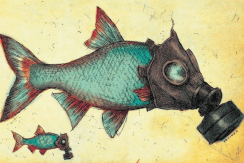
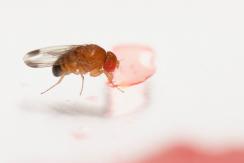
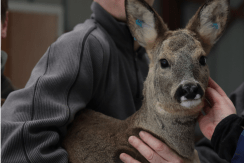
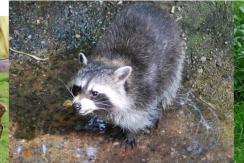
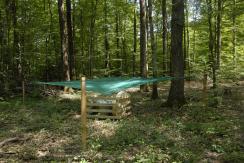
You also, comment on this article